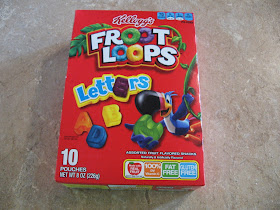I know a lot of people feel that buying the toys hanging on the aisles at the grocery store is a terrible waste of money. I will grant that these "grocery store toys" are often cheaply made (one of our robots came out of the box missing an arm), and somewhat overpriced for their initial play value.
We have had a lot fun over the years with our grocery store finds though, not only playing with them as toys, but learning from them as scientific exploration kits (where the real pay-off is found).
Take for instance the JaRu Battle Bops Spin Bots I picked up on C's birthday. They're a simple ripcord type toy - pull the serrated ripcord to make the hat spin and the bot bounce around (a little)...
...and light up. Just as the box described, they did spin (a little) and light up, but they didn't really move enough to battle (or even knock into) each other.
Having made
our own battle bots in the past, the children started brainstorming ways to increase the movement, and action of the toys.
First off, they felt the springs on the legs might be absorbing too much of the motion, and set about adding straight, stiff legs. This led to issues of...
...balance, and how to properly secure the new legs...
....so they wouldn't fling off from the centrifugal force of the spinning post in the center. Legs were secured, and balanced, but they reduced the motion instead of increasing it, so...
...the legs were shortened (with little change to the motion)...
...the spinning top hat was freed (allowing it to move more easily), and "feet" were adding to the legs (reducing the motion even more)...
...and weight was added to one foot (still with no improvement of movement).
Finally, remembering the offset motors we used in our own battle bots, the spring legs were put back onto the bodies, and play dough was added into one side of the hat.
It worked like a charm, giving us a much more active robot.
Then, the children moved onto wondering about what was making the light go on. Clearly the ripcord was spinning the post in the center of robot, which put the robot into motion, but how was that turning on the light?
The consensus among the children was that there was a magnet inside, spinning around wire, to make a sort of hand operated generator to light up a tiny light bulb. But, when we looked inside...
...we found there were three little light bulbs...
...secured over a half of a rubber sphere...
The lights were on the backside...
...of a little circuit board...
...and the rubber sphere, held three tiny batteries.
After pulling out our alligator clip wires, and an extra bulb (from a finger light - an old grocery store purchase), so we could experiment with closing the circuit...
...while still testing to make sure we hadn't shorted out our lights (thus the need for the extra light)...
...we finally decided the two strips of metal on the circuit board worked as some kind of centrifugal switches, making contact with the posts, or board, in the right spots, as the central post spun, also spinning the rubber base, causing the strips to move outward just enough. Or, they made contact by being jarred into place by the bouncing bot (the central hole is lot bigger than the central post - making it move and bang against the board, as it spins).
Satisfied with our discoveries, we reassembled our toys, which were no worse for wear, excect for their faces, which had been partially removed by the tape. C (age 10) is already making plans for drawing new faces with permanent markers, and maybe adding googly eyes.
Circuit boards, centrifugal force, engineering, brainstorming, problem solving, and art to boot - I really don't think our $2.50 a pop was wasted at all.

























































